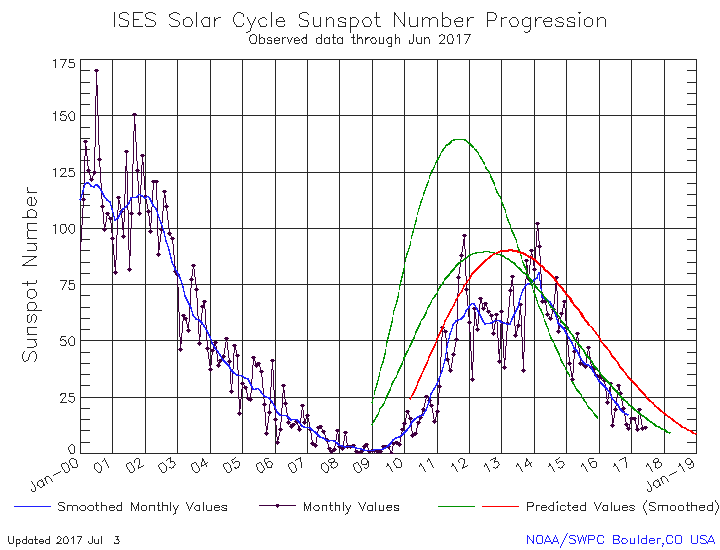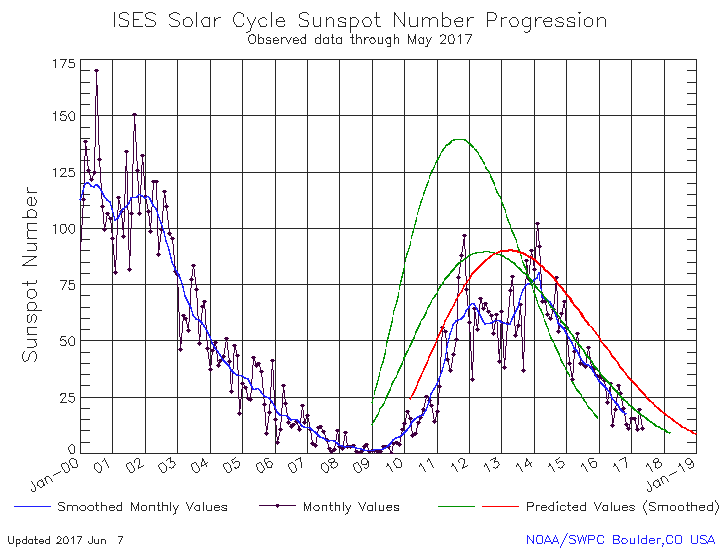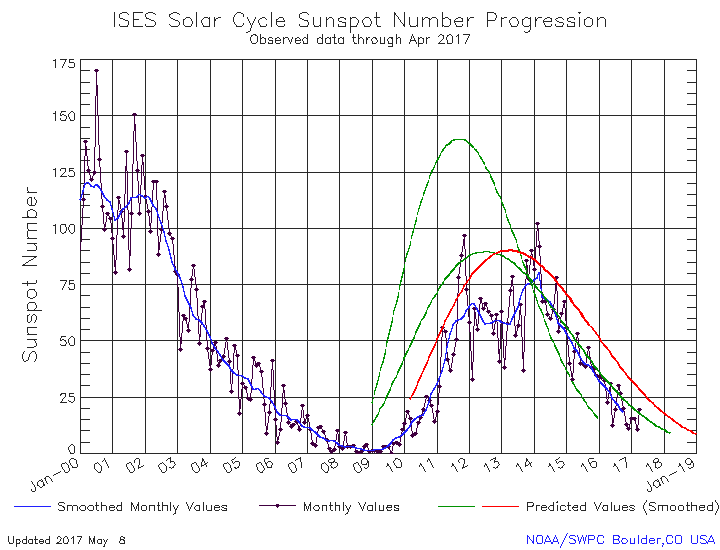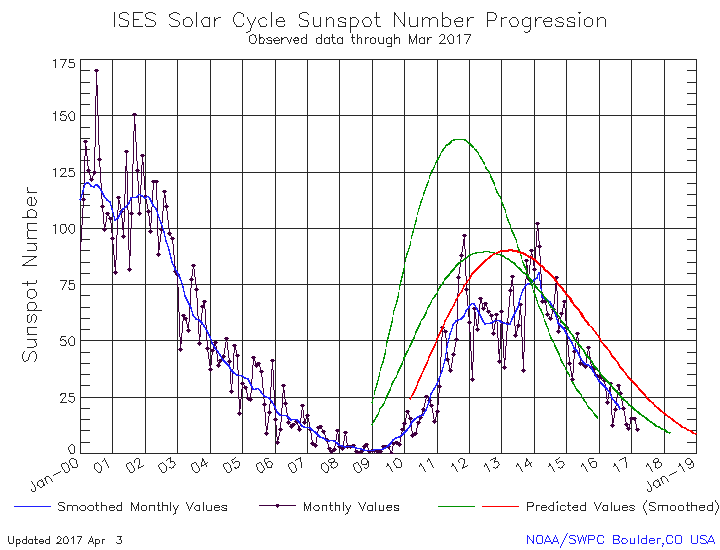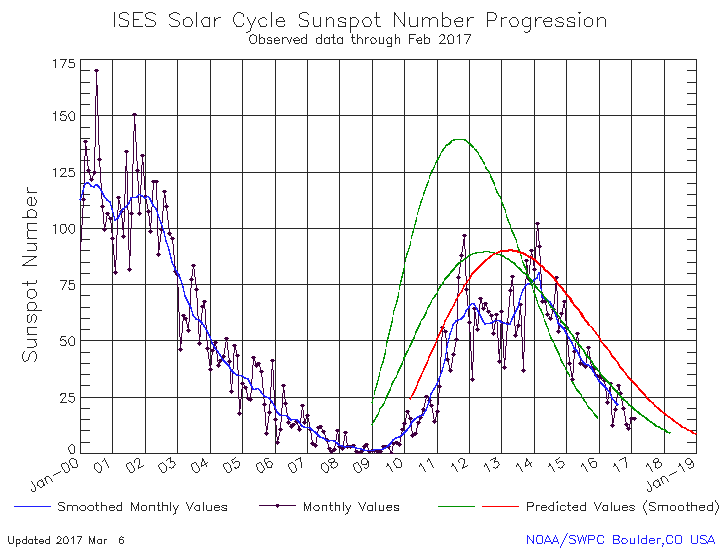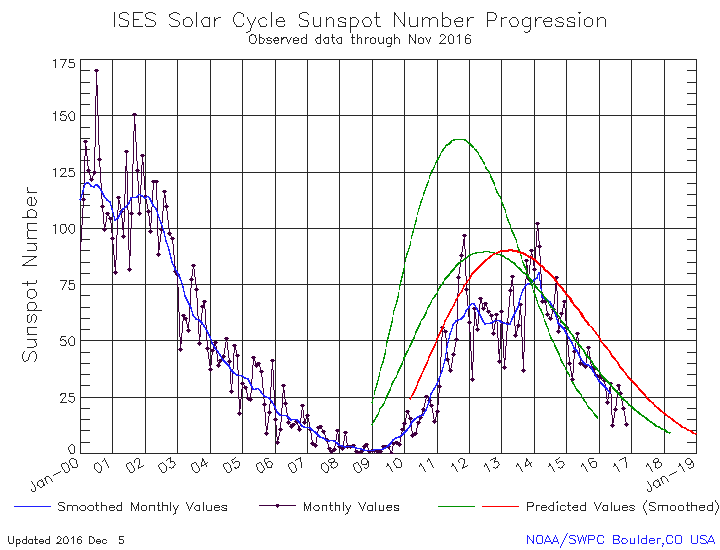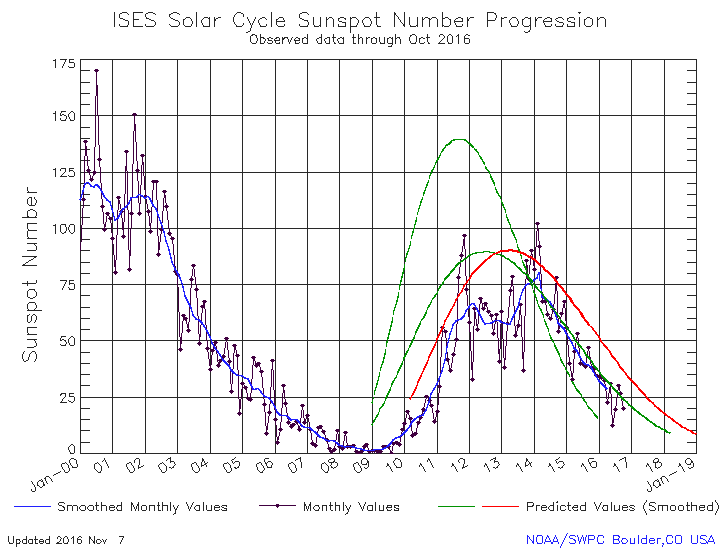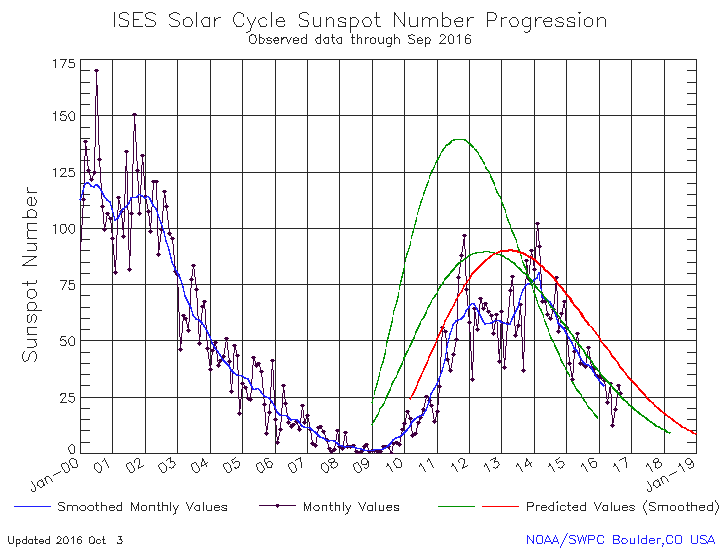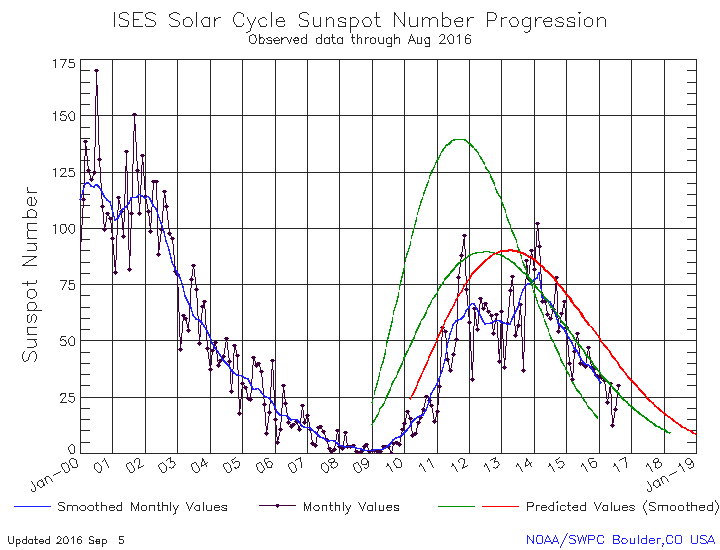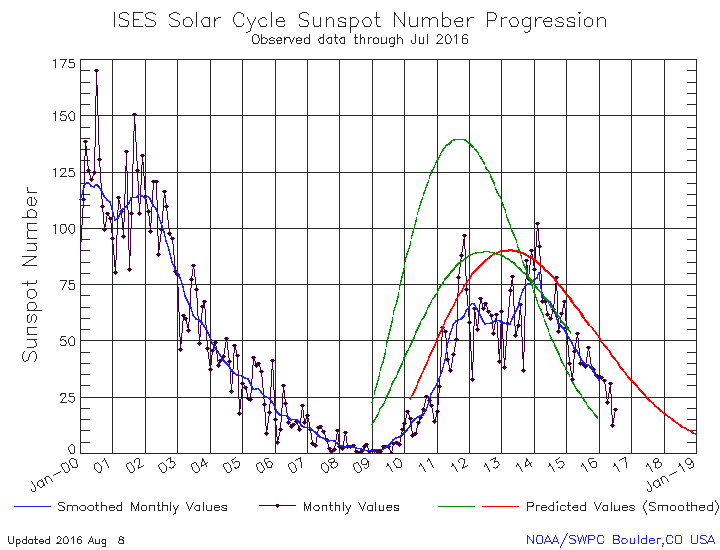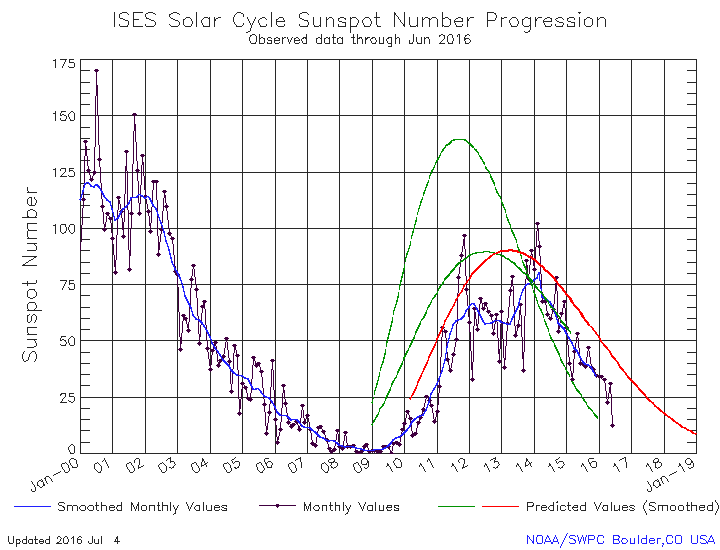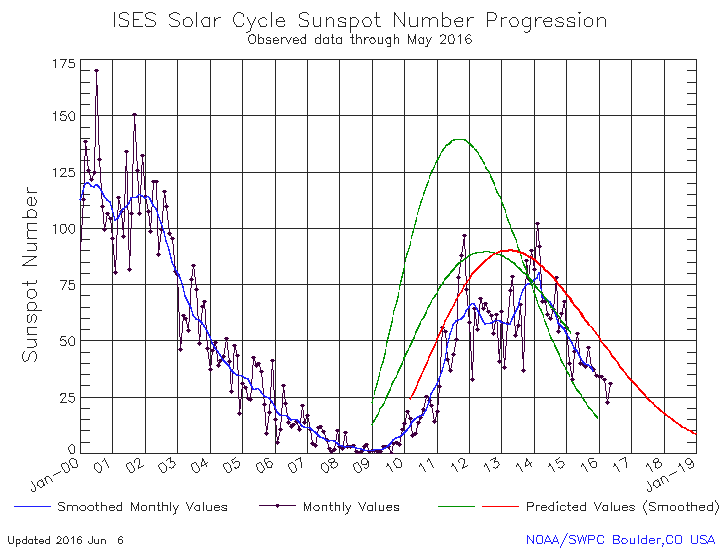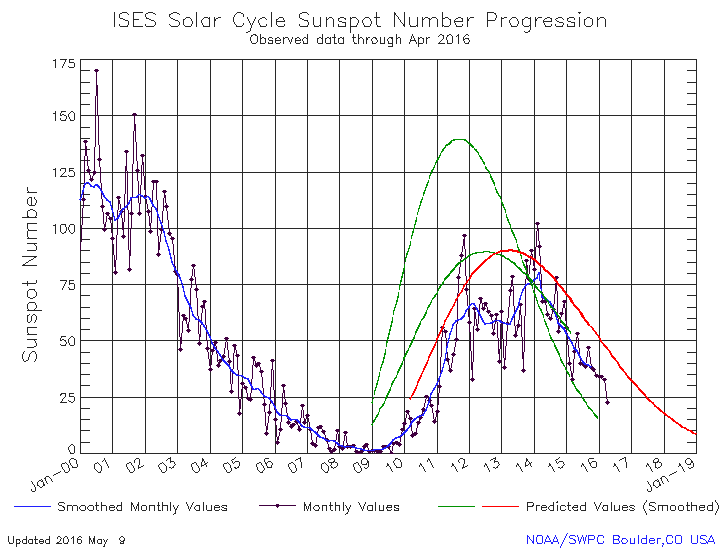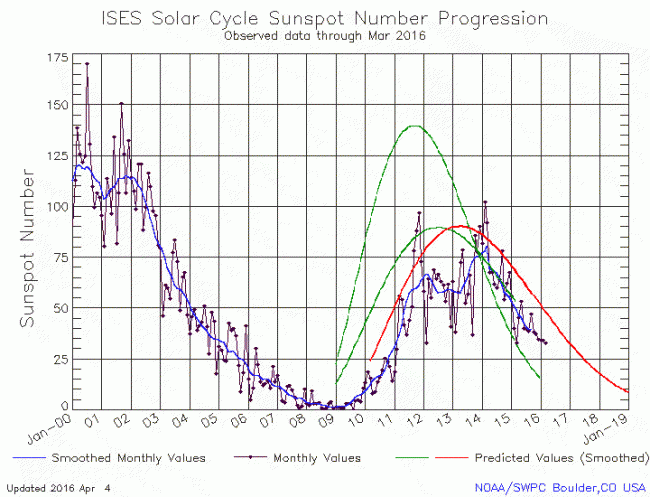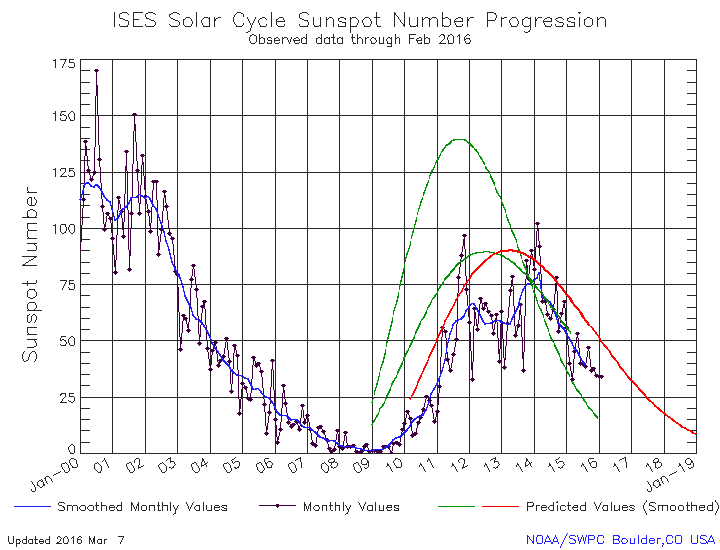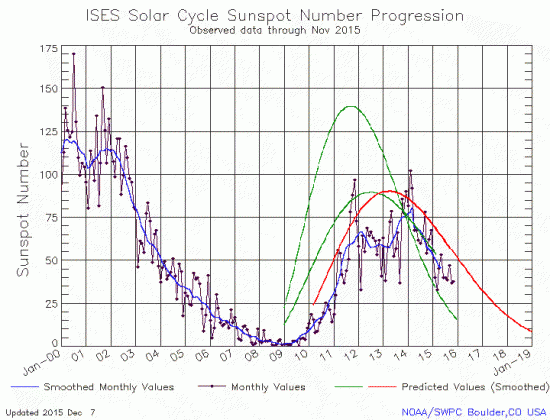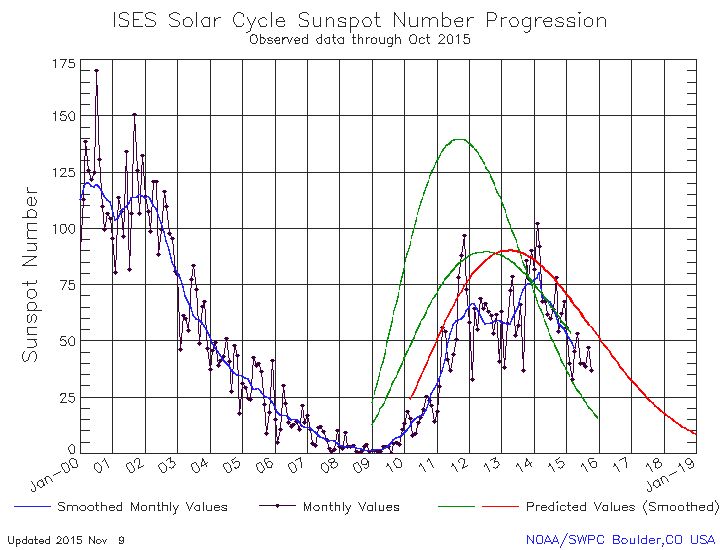Sunspot update for July 2017
NOAA today posted its monthly update of the solar cycle, covering sunspot activity for July. As I have done every month since 2010, the graph is posted below, with annotations.
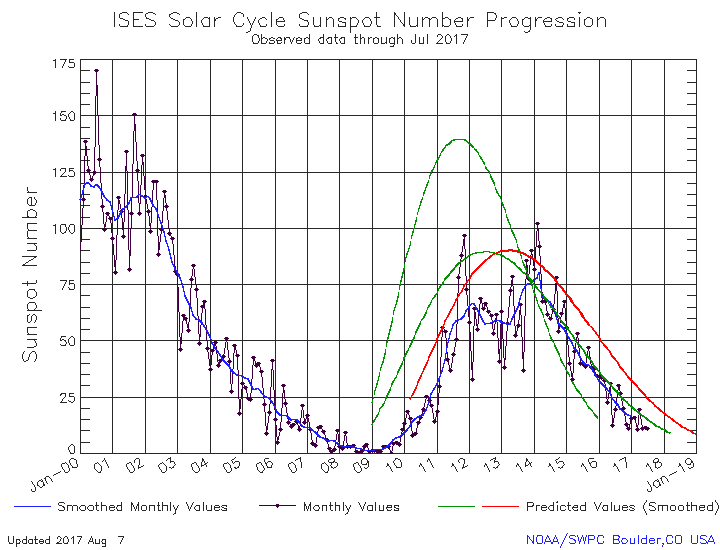
The graph above has been modified to show the predictions of the solar science community. The green curves show the community’s two original predictions from April 2007, with half the scientists predicting a very strong maximum and half predicting a weak one. The red curve is their revised May 2009 prediction.
Sunspot activity in July remained almost exactly the same as in both May and June. This is the first indication that this cycle’s ramp down from solar maximum will follow the standard pattern of a slow and extended decline to minimum. Up until now the drop in sunspot activity has been as fast as the increase during ramp up. Historically the ramp down has instead been slower, sloping downward gently and over a much longer time period. The last few months suggest that this cycle’s end is beginning to resemble past cycles.
Meanwhile, a review of past solar cycles by German scientists suggests that a cyclical cooling period in the Sun’s output is coming, and that such ups and downs can be tracked in the solar record.
In order to elucidate the solar influence, we have used a large number of temperature proxies worldwide to construct a global temperature mean G7 over the last 2000 years. The Fourier spectrum of G7 shows the strongest components as ~1000-, ~460-, and ~190 – year periods whereas other cycles of the individual proxies are considerably weaker. The G7 temperature extrema coincide with the Roman, medieval, and present optima as well as the well-known minimum of AD 1450 during the Little Ice Age. We note that the temperature increase of the late 19th and 20th century is represented by the harmonic temperature representation, and thus is of pure multiperiodic nature. It can be expected that the periodicity of G7, lasting 2000 years so far, will persist also for the foreseeable future. It predicts a temperature drop from present to AD 2050, a slight rise from 2050 to 2130, and a further drop from AD 2130 to 2200. [emphasis mine]
Note that this prediction is not based on any real understanding of the Sun’s sunspot cycle or what causes any variations in its brightness. All they have done is extrapolate into the future the patterns of past fluctuations. This is as if a weatherman averaged how many times it normally rains in your town, and then predicted rain in the next few days merely by those averages. “It rains on average every three days, so because it rained yesterday expect no rain for the next two days!”
Nonetheless, the past fluctuations seem to follow a cyclical pattern, and thus also appear to confirm other studies that suggest we are heading towards another grand minimum, with no sunspots for decades, which also in the past corresponded with cooler global temperatures.
NOAA today posted its monthly update of the solar cycle, covering sunspot activity for July. As I have done every month since 2010, the graph is posted below, with annotations.

The graph above has been modified to show the predictions of the solar science community. The green curves show the community’s two original predictions from April 2007, with half the scientists predicting a very strong maximum and half predicting a weak one. The red curve is their revised May 2009 prediction.
Sunspot activity in July remained almost exactly the same as in both May and June. This is the first indication that this cycle’s ramp down from solar maximum will follow the standard pattern of a slow and extended decline to minimum. Up until now the drop in sunspot activity has been as fast as the increase during ramp up. Historically the ramp down has instead been slower, sloping downward gently and over a much longer time period. The last few months suggest that this cycle’s end is beginning to resemble past cycles.
Meanwhile, a review of past solar cycles by German scientists suggests that a cyclical cooling period in the Sun’s output is coming, and that such ups and downs can be tracked in the solar record.
In order to elucidate the solar influence, we have used a large number of temperature proxies worldwide to construct a global temperature mean G7 over the last 2000 years. The Fourier spectrum of G7 shows the strongest components as ~1000-, ~460-, and ~190 – year periods whereas other cycles of the individual proxies are considerably weaker. The G7 temperature extrema coincide with the Roman, medieval, and present optima as well as the well-known minimum of AD 1450 during the Little Ice Age. We note that the temperature increase of the late 19th and 20th century is represented by the harmonic temperature representation, and thus is of pure multiperiodic nature. It can be expected that the periodicity of G7, lasting 2000 years so far, will persist also for the foreseeable future. It predicts a temperature drop from present to AD 2050, a slight rise from 2050 to 2130, and a further drop from AD 2130 to 2200. [emphasis mine]
Note that this prediction is not based on any real understanding of the Sun’s sunspot cycle or what causes any variations in its brightness. All they have done is extrapolate into the future the patterns of past fluctuations. This is as if a weatherman averaged how many times it normally rains in your town, and then predicted rain in the next few days merely by those averages. “It rains on average every three days, so because it rained yesterday expect no rain for the next two days!”
Nonetheless, the past fluctuations seem to follow a cyclical pattern, and thus also appear to confirm other studies that suggest we are heading towards another grand minimum, with no sunspots for decades, which also in the past corresponded with cooler global temperatures.

